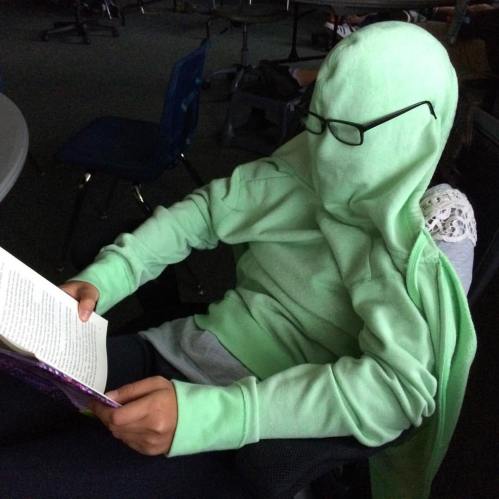
Photo by Andrea Piacquadio from Pexels
As we hunker down to prevent the spread of COVID-19, parents and teens are going to struggle with spending so much time together in the same space. Earlier I posted the No-No List for Parents, which is a guide for parents on improving communication. In the spirit of fairness, here’s a guide for teens and tweens to help life together go a little more smoothly.
- Be Tidy
To you it may be just a plate on a table or a shirt on the couch, but to the people you live with, it’s a mess. Take it with you when you leave the room and deposit it in the sink or on your bed. Speaking of bed, at least toss the covers back over the mattress in the morning—sort of an “almost-made” look. Don’t be a slob! A bonus: taking care of the little things can cut down on nagging by the parents.
- Use Your Manners
The people in your house are not your servants. Sprinkle “Please” and “Thank you” everywhere you can. It’s much more pleasant than “Sure,” “I guess,” or “Whatever.” Or worse—making demands. Replace “Hand me the remote!” with “Remote, please” and “Move!” with “I need some space, please.” And when someone offers you a choice—“Pizza or a chicken bake?”—answer with “Chicken bake, PLEASE.” It’s amazing how manners can cut down on conflicts.
- Keep the Noise Down
Use your headphones or close the door if your music is loud. When you want to talk to someone, go into the same room with them. There might be people working in your house, so don’t bang the cupboards or the microwave door. If you’re on a video chat, be mindful of what others in the room might be watching or listening to and turn your volume down (or use earbuds).
- Share
Reconsider letting your younger sibling borrow your phone to play games. Set a time limit of half an hour if that helps. You are not the most import person in your house, so beware of behaving as if you are. Share, take turns, be considerate of others’ needs—all those things you learned in kindergarten are even more important at home, especially now.
- Stay Out of It
Just like you don’t want everyone up in your business, neither do they want you poking into theirs. You don’t have to know what every conversation is about, especially if you weren’t invited to be part of it. Let others have the same privacy that you want to have.
- Give Your Phone a Break
You don’t want to miss anything, but it’s rude to be looking at your phone when someone is talking to you. I know it’s hard to drag your eyes away from the screen but do it anyway. Stuff your phone in your pocket or toss it on the table or couch for 10 minutes—or an hour—and give people your undivided attention. Nothing says “You matter” more than eye contact and appropriate responses. Words are always better than grunts, shrugs, or the non-committal “Huh.”
- Communicate More
For most of us, “We all we got” is more than just a phrase used by the team to get pumped up; it’s our current reality. Your parents are concerned about you, so when they ask how you’re doing or how things are going, sum it up in a few honest sentences and skip the “Okay” or “Fine.” Try a bad and a good—“I really miss my friends, but I’m getting used to doing school online.” And don’t forget to return the favor; your parents might be missing their work buddies or at least time with other adults. Check in with them once in a while.
- Keep Your Emotions in Check
Your frustration does not give you the right to dump your bad feelings on the people you live with. Go back and read that again. You can express your feelings in the first person—“I hate being cooped up here!” But you should not be attacking those around you, especially since options for getting away from each other are so limited. Can’t take it anymore? Go for a walk or a run. Unload to a friend. You’ve got to live with these people for a few more weeks; do your part to keep the peace.
- Resist Whining
Commiserating means feeling bad together: “Man, this stinks.” “Right?” But whining is self-centered: “Why do I have to stay hoooome?? I want to see my frieeeeends!” “It’s so unfair that I had to give up my sports seasooonnn!” It is unfair and nobody’s happy about it. Commiserate with your friends or family, but don’t make the mistake of thinking it’s worse for you than for somebody else. Cancelled weddings, vacations, performances, sports—everybody is in the same boat. If you need to wallow in self-pity, you’re certainly entitled to do so, but you don’t need to pour it on anybody else. And don’t let it last too long—find something that makes you feel better.
- Step It Up
Whether it’s schoolwork or housework, it has to be done. Make yourself some kind of schedule, even if it’s a loose one: one hour of studying and one chore completed in the morning before playing any games. Another hour of studying and some exercise after dinner. Or get it all done first thing and be done with it. Find a routine that works for you and stick to it. Don’t get to the end of the day only to discover you’ve done nothing productive; eventually it will take a toll on your emotional health.
We don’t know when these restrictions will end, but they WILL end sometime. Until then, do what you can to live in peace and harmony in your house. Better yet—be the one to create the peace and harmony!






 “I used to pick out all her outfits for her,” a mom told me recently, “but now that she’s in 5th grade, I’m not allowed to.” “He claims he’s in middle school now,” said another 5th grade mom. “I told him not until he’s in 7th grade!”
“I used to pick out all her outfits for her,” a mom told me recently, “but now that she’s in 5th grade, I’m not allowed to.” “He claims he’s in middle school now,” said another 5th grade mom. “I told him not until he’s in 7th grade!”
